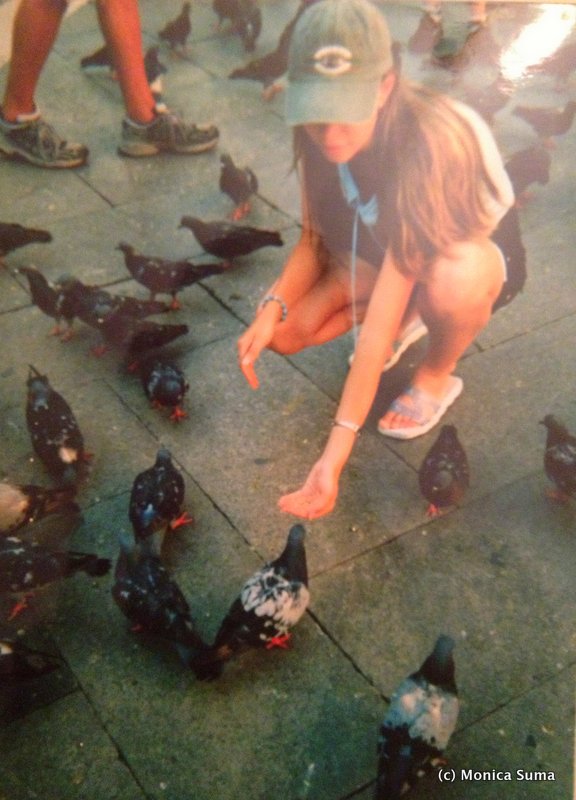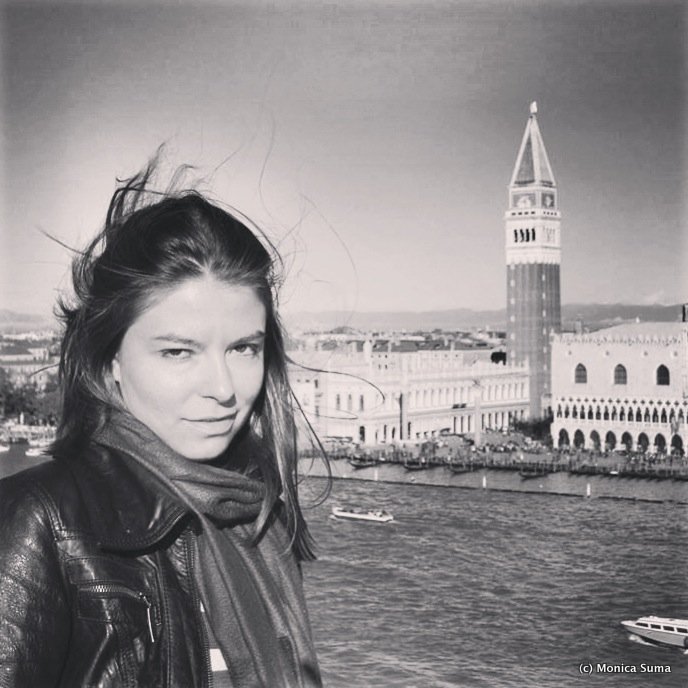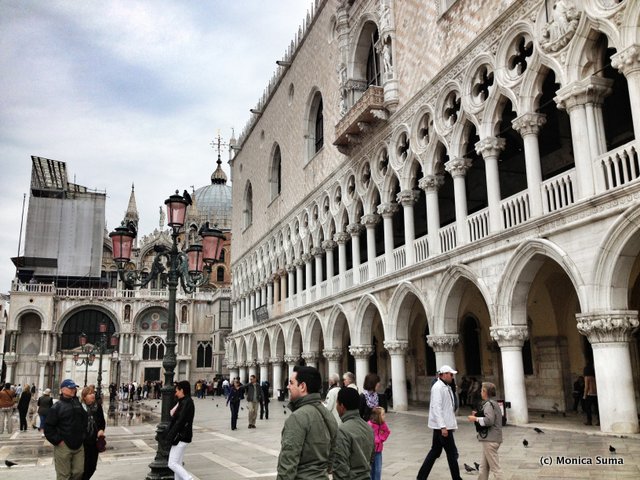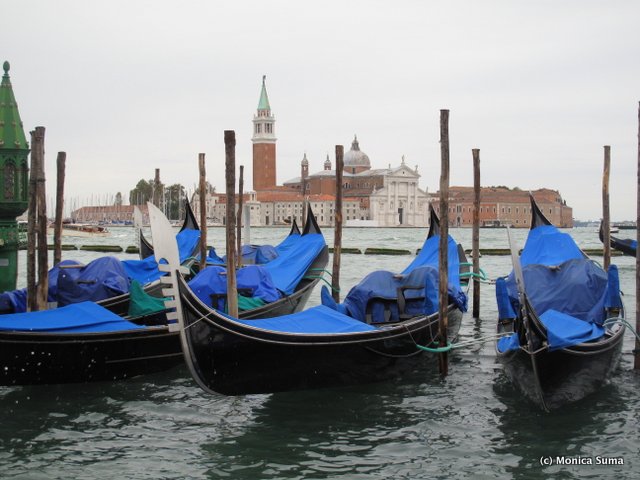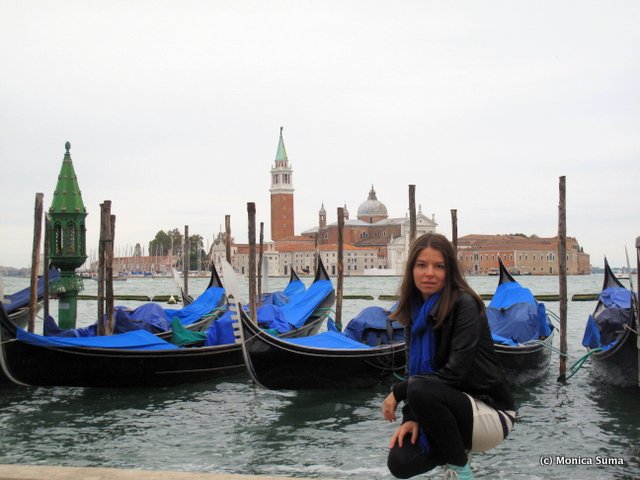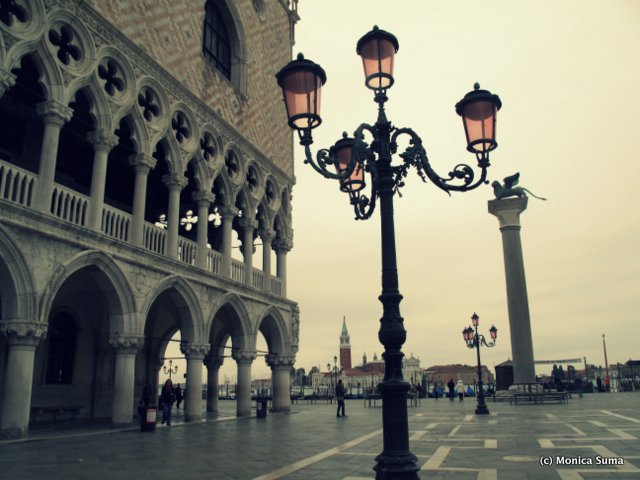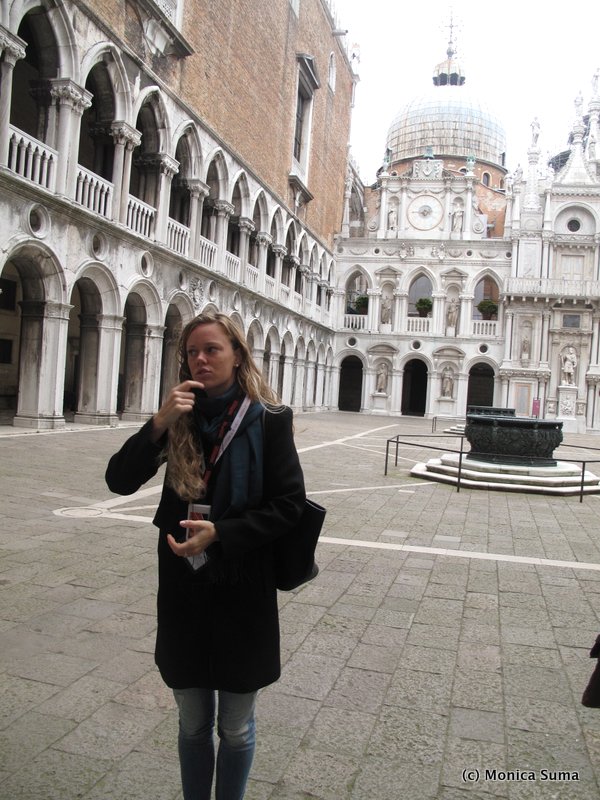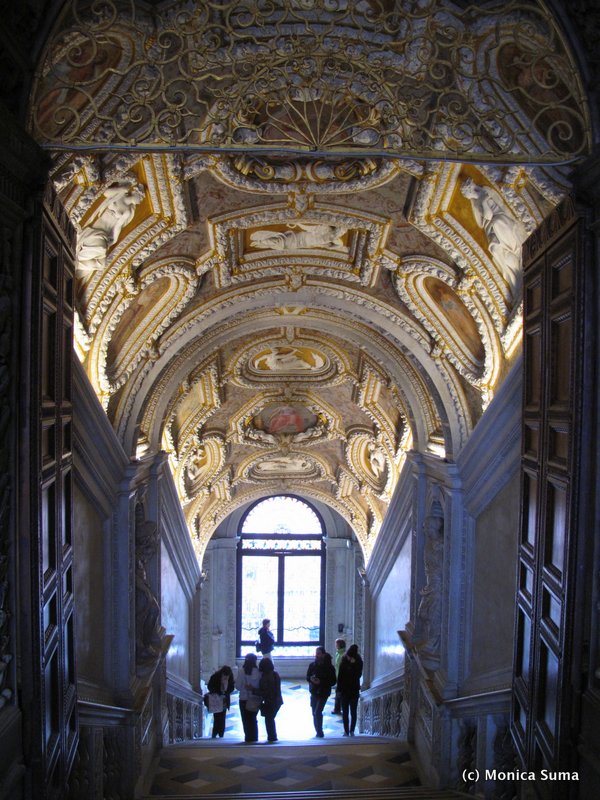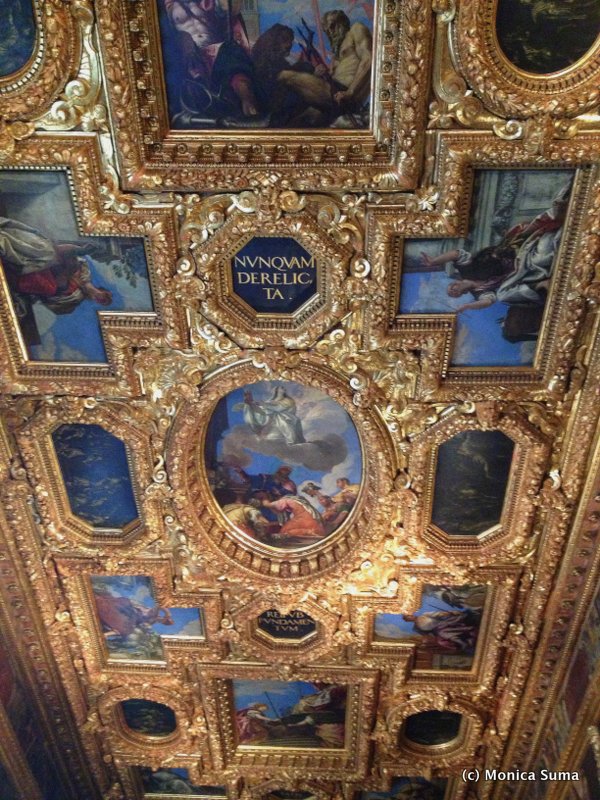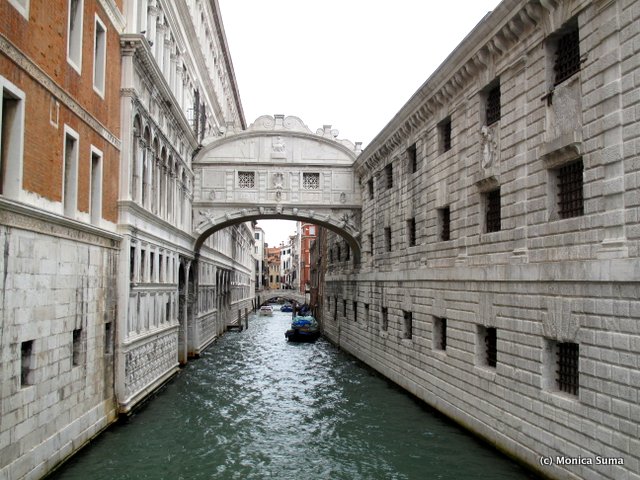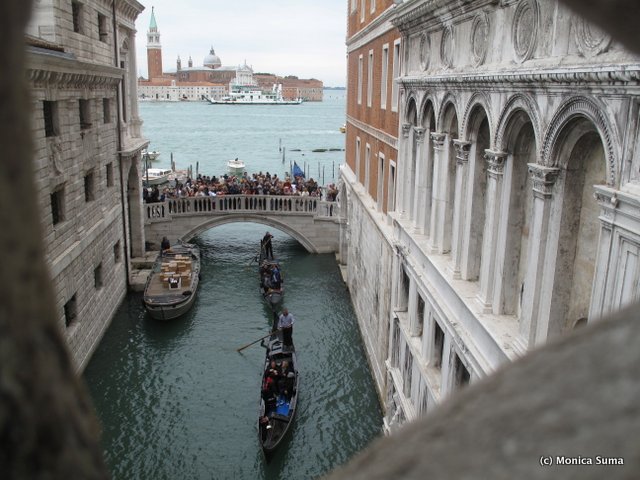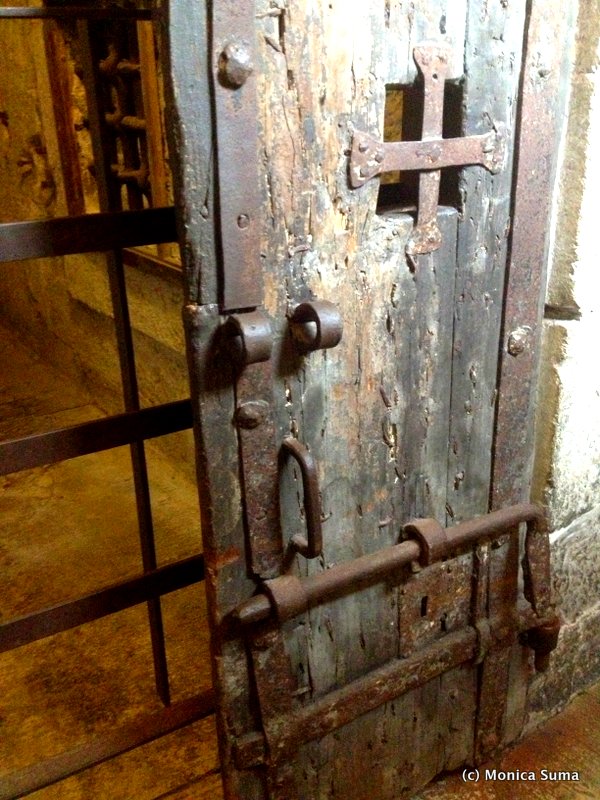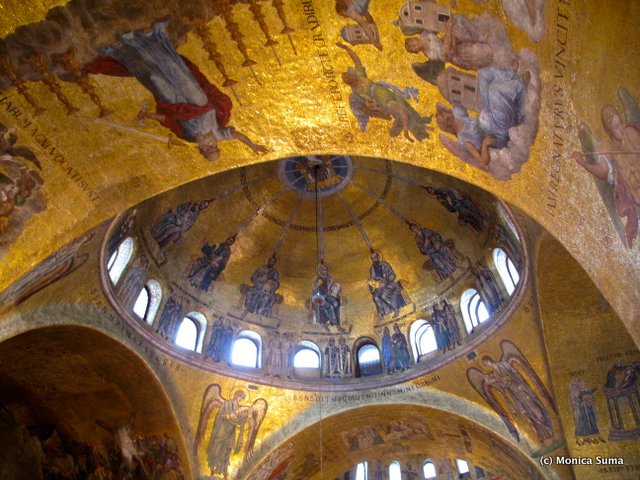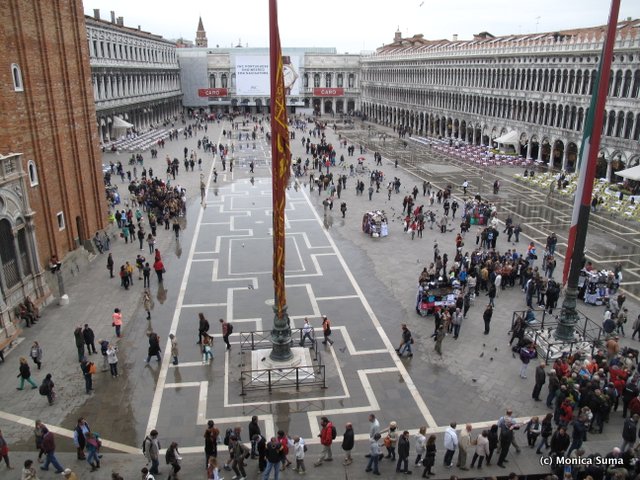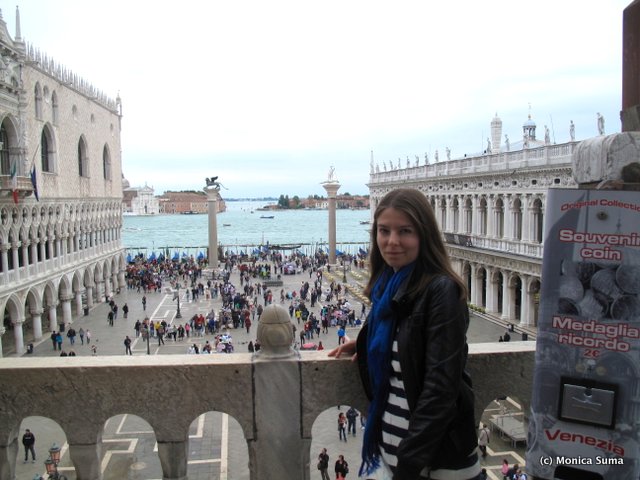I was 17 years old when I first went to Venice, in what was to be a comprehensive tour throughout all of Italy. I remember it clearly how we embarked a local vaporetto to take us across the salty island waters, past the gondolas, towards a sunny inamorata Venetia.
I was instantly mesmerized; the city’s aura had blindsighted me. Such as a flawless diamond’s reflections, so were the sunshine’s rays brimming unto the city walls. La Serenissima was as beautiful as it was said to be, surely a magical destination for rich history, art and romance. Ten years later, I found myself on a different vaporetto, in a more somber but equally magnificent Venetia.
Then
Now
Unlike the two other times when I only visited for the day – which is what Venice is mostly known for due its limited accommodations and difficulty to get around – this time around I stayed over night, in a traditional Venetian house.
To reminisce my last two times here, I walked to no end the streets of Venice, which more than ever, appeared as an entangled labyrinth of sorts. Part of the charm of discovering Venice – where no cars or bikes are allowed, or can circulate for that matter – is getting lost, which I easily succeeded a few times. I reacquainted myself with Piazza and Basilica di San Marco, Ponte di Rialto as well as seeing the panorama from the top of the Campanile. What I never saw in Venice though was the Doge’s Palace, or Palazzo Ducale as it is known in Italy.
There was never a better time to do so with Walks of Italy’s VIP Access Secret Passages: Doge’s Palace and St Mark’s, an in-depth tour that took us through the forbidden entryways of the palace, such as the secret archives and wooden offices, torture chambers and the palace’s attic, home to restricted prison cells, including that of the famed Casanova, as well as access to the top terrace of the Basilica di San Marco, all within an intimate group of 12 people.
Centuries ago, aristocrats used to exhibit their wealth through their gondolas, which is why a law was given ever since then to have all gondolas painted black. They remain all black up to this day. This doesn’t mean the fabrics can’t be colorful
***
At 8:30 am, on my second day in Venice, I wait by the elongated statue in Piazza San Marco, thinking to myself that gloves wouldn’t have been a bad idea; it was that chilly. As the time for the tour was approaching, I see a girl firmly approaching holding a list in her hand.
“Hi, I am Marina, I will be your tour guide for the day.” As she crossed us off her list, I was curious to learn more about our young guide and what we were about to see.
“I am 100% Venetian,” she says, “but I don’t have the Venetian colors,” the blonde-haired, blue-eyed girl rightfully pointed out. Stemming most probably from the Austrian occupation in Venice – or so she implies – Marina turned out to be not only an encyclopedia of knowledge, but an unwavering, proud Venetian.
“There are two types of Venetians: those that would never live anywhere else and those that move as far away as possible.” It was evident which kind Marina was.
Piazza di San Marco is looking especially beautiful and dramatic at 8am in the morning
To point out everything I learnt on the VIP Doge’s Palace Secret Passages Tour would be virtually impossible. It’s safe to say though that the history of the only Republic in the Middle Ages, whose leader was in fact Il Doge, intrigued me more than I thought it would.
Starting from the founding of Venice, a lagoon comprised of 118 islands tied together for mutual defense from the infamous Longobardi, as the power of the Western Roman Empire dwindled in northern Italy, up to when Venice became a Republic, the Doge’s Palace was constructed as the political, religious and cultural heart of the city. And given its secluded location in the archipelago, and only one bridge appointed to connect the mainland to the city of Venice, the spectacular Palazzo has always been an impressive structure, to impress its visitors upon arrival.
The Doge’s Palace “Palazzo Ducale” is a splendid combination of Byzantine, Gothic and Renaissance architecture, one that has always been the center of the Venetian Empire and the seat of the Venetian Government.
Our wonderful Walks of Italy guide – Marina
As Marina explained upon entering the first courtyard, there are Gothic pointed arches from the 15th century on one side, and Renaissance, Roman, round arches from the 16th century on the other. As we entered the palace, we passed through the lavish rooms, which displayed masterpieces by Tintoretto – known for its dramatic, darker colors – and Veronese – known for its bright colors.
Few are frescos though, mostly canvases due to the high humidity in Venice. The tour also passed through the secret wood offices of the Doge and his chancellors, as well as the main government halls, including the Great Council Room, the largest room in Venice and Italy for that matter.
Bridge of Sighs
And yet, the Doge’s Palace is so much more than a mere series of grandiose rooms. The palace is connected via the Bridge of Sighs to a starkly different prison comprised of cold, dark cells hosting the wrongdoers of Venice.
Venice seen from the other side, from within the Bridge of Sighs
Passing through the legendary bridge was certainly one of the highlights of the tour, one which allowed me to stop, look through the cracks and catch a glimpse of what was on the other side: hundreds of tourists taking pictures of the bridge, not knowing that I was there, looking at them and doing the exact same thing; I was photographing a poetic Venice through a tiny loophole, experiencing a sweet, forbidden feel about it. My few minutes of aha! glory resulted in getting lost from the group and spending a good ten minutes alone through the spooky hallways … it certainly felt like an early Halloween 🙂
Venetians that committed murder, released state secrets, returned from exile, harmed children or dared to pollute the waters of Venice (considered as severe of an offense as murder) would end up in a cell like this …
In this Venetian prison, six to eight people shared a hellish cell, which most probably was often damp and flooded, due to Saint Marks being the lowest point of the city. It is also through the eerie, narrow passageways that the legendary Casanova was incarcerated to only infamously escape later on.
Inside Basilica di San Marco
Leaving the Doge’s Palace, we headed back to Saint Marks Square and inside the Basilica, and up the stairs to the second floor. It was there where we observed up-close the 24K gold plated mosaics of saints and the iconostasy of the originally built Greek Church.
Also on the second floor were the original copper, covered in gold, horses that once stood above the entryway to the Basillica, proudly displayed in a corner. We then stepped outside on the terrace, from where we had a spectacular 180-degree view of the square.
I had seen the panorama from Il Campanile the day prior, but there was something special about this one: it was one to better observe up-close the emblematic hum of the Venetian square.
By the end of the day, I had a newfound appreciation for Venice and its history. But most important fact I learnt?
Be careful about mentioning Napoleon to Venetians. He may have conquered Venice in the 18th century and destroyed all its lions – symbols of power – but he hasn’t taken their steadfast Venetian pride.
“Next time I hope to be your tour guide around New York,” I wave goodbye to our guide as I look down Piazza San Marco once again.
***
Disclaimer: Walks of Italy offered me a complimentary tour of the VIP Doge’s Palace Secret Passages Tour, however all opinions are my own. I highly recommend the complexity of the tour and the convenience of an intimate group. Grazie mille, I really enjoyed it!

